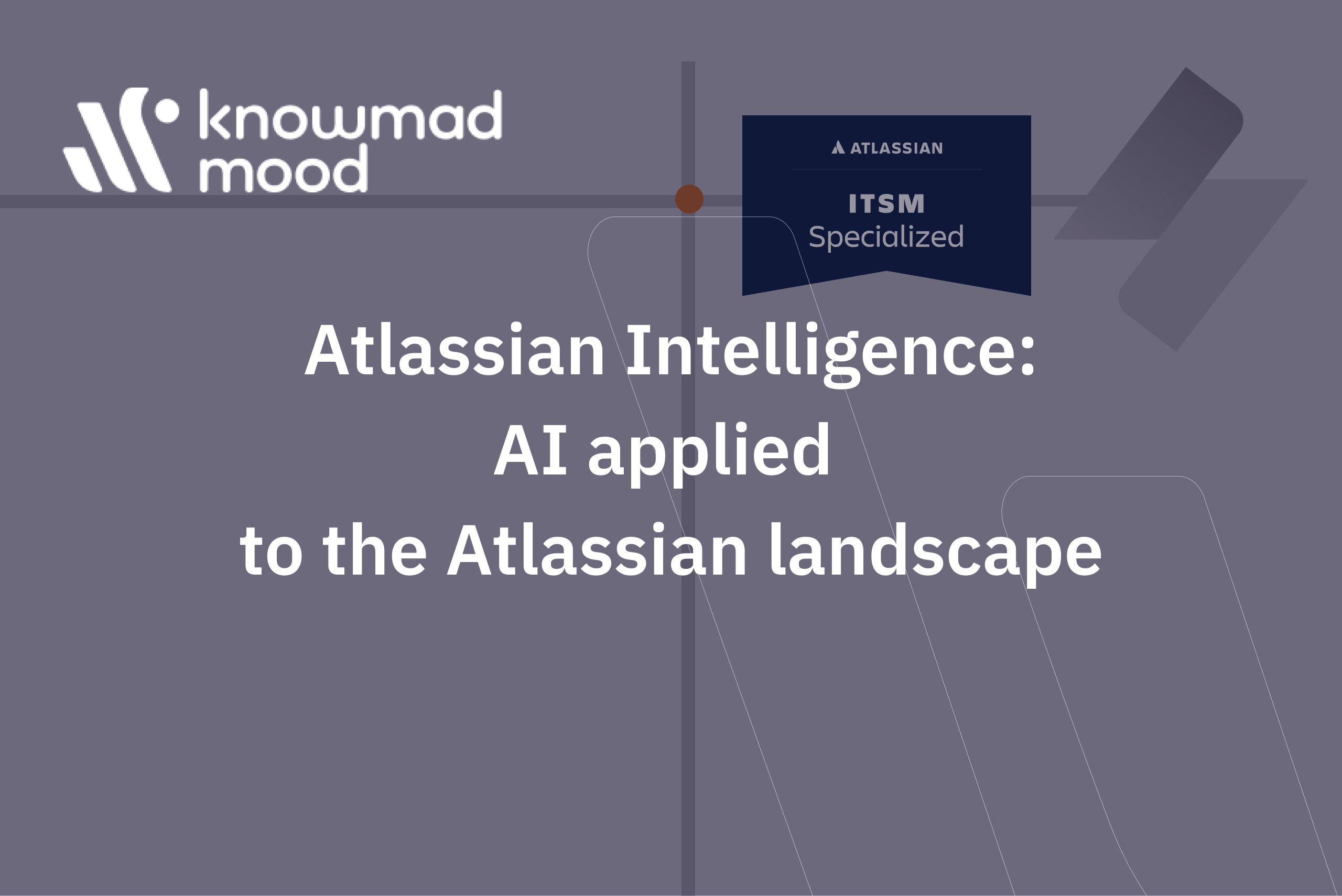
Atlassian Intelligence: AI applied to the Atlassian landscape
What is Atlassian Intelligence?
Atlassian Intelligence is a collection of AI-powered capabilities that help teams by facilitating some of their day-to-day tasks by improving ticket resolution, reducing resolution times, etc.
In other words, Atlassian Intelligence is a virtual companion that streamlines the work of teams, especially with repetitive tasks.
This Atlassian AI is supported by the OpenAI platform and is available only on the Atlassian Cloud.
How to activate AI in your instance
It is important to note that AI is not available in all Atlassian Cloud plans, only in its Premium and Enterprise plans.
Currently, AI is not enabled by default (it is expected to be enabled as of May 6, 2024), so it is necessary to indicate for which products you want to enable it. pecifically, the organization’s administrator must undertake the following steps: pecifically, the organization’s administrator must undertake the following steps:
- Access the organization’s administration, you can access through this url: admin.atlassian.com and once there select the organization to modify.
- Once in the administration you must access the section: Settings> Atlassian Intelligence.
- Once in that section click on the “Select products to activate” button and select the products to activate the AI as shown in the following images.
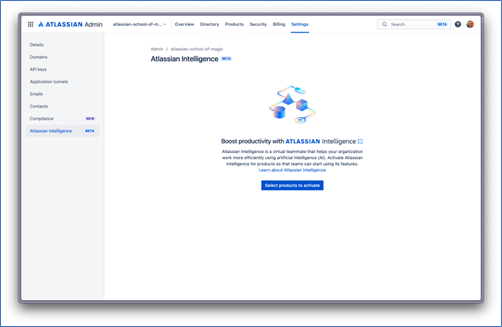
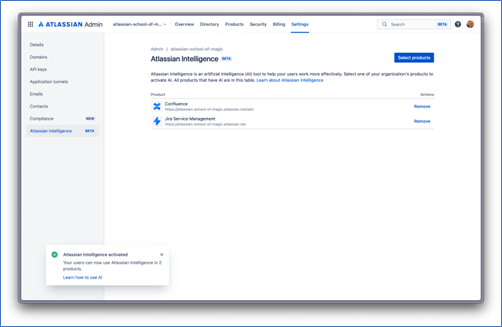
How to find the AI functions in the instance
It is important to look for the following icon in the instance, which will indicate that AI can be used in that section.
![]()
What features does AI offer?
Atlassian AI has much to offer. At the moment the main ways in wich it helps in an ITSM environment are:
- Virtual Agent
- AI Summaries
- Generative AI in the issue editor
- Similar Requests and incidents
Virtual Agent
A virtual agent is software that follows pre-configured rules to provide answers or instructions to questions made by the user. The better our rules are the more intuitive and fluid the conversation with our agent becomes.
The benefits of a virtual agent
Virtual agents can free you from routine work. The most common tasks managed by the agent are:
- First answers, Notifying the client that their ticket is being processed
- Resolution of frequently created incidents, thanks to proper rule configuration
- Resolution of tickets thanks to a complete Confluence Knowledge Base
- and more!
How to configure the virtual agent
The virtual agent is configured in the administration of each Jira Service Management project in the Virtual Agent section.
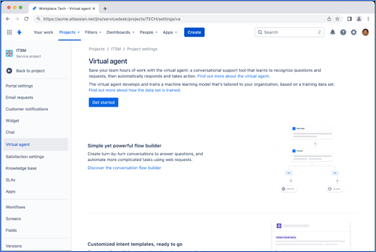
The virtual agent works through Slack channels, so it is necessary to have a Slack workspace (with a paid license) on which the agents can access. Currently the virtual agent is only supported on Slack but it is expected that in the future it will also be supported by Microsoft Teams.
Intent
Each virtual agent can be configured with various Intents. Each Intent represents a problem, request or question for which the virtual agent will provide an answer.
If the virtual agent detects an Intent he will ask the client if the detected Intent is correct. If so, the virtual agent will begin the conversation workflow as defined in the Intent to solve the client’s need.
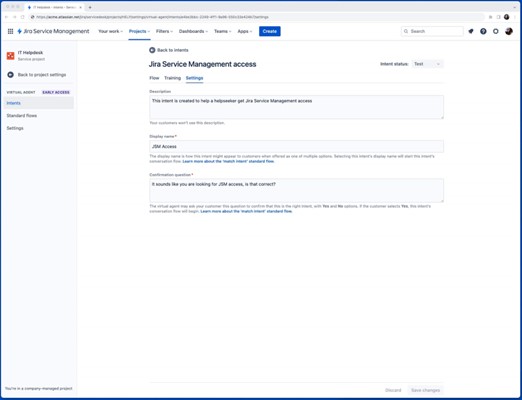
Slack channels
You can configure 3 different types of channels in Slack where you can interact with the virtual agent:
- Agent channel: only agents and administrators can access the agent channel to assign, classify, comment and work on incidents.
- Request channel(s): The request channel(s) allows customers to contact the virtual agent to get help and create tickets.
- Test channel: The test channel allows to see how the virtual agent works before activating it for customers.
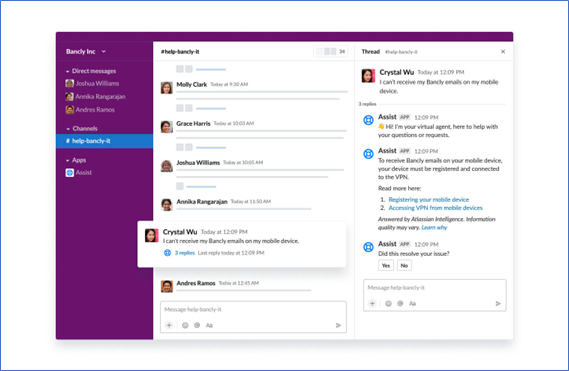
Response or conversation types
There are 2 main conversion types to configure the virtual agent:
- Pre-defined intent conversation flows
- AI answers powered by Atlassian Intelligence
Pre-defined intent conversation flows:
Behind this type of conversation there is a pre-established flow behind that uses decision trees. The conversation between the client and the virtual agent is marked by the answers that the client selects according to the options suggested by the virtual agent. For this reason, it is very important to define a clear and complete flow that facilitates and covers as many scenarios as possible.
Once the virtual agent is created and connected to Slack channels, the flow will be configured in the Virtual Agent > Intents > Flow section:
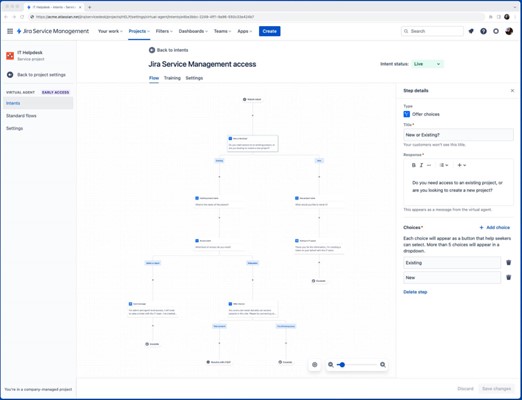
AI answers powered by Atlassian Intelligence:
This type of conversation applies generative artificial intelligence to search in the knowledge base (located in a Confluence space and linked to the Jira Service Management project, if you need more information see this link) the answer to the questions requested by customers.
If you want to activate this conversation option, you can do it once the virtual agent has been created and connected to Slack channels, in the Virtual Agent > Settings > Basic settings section.
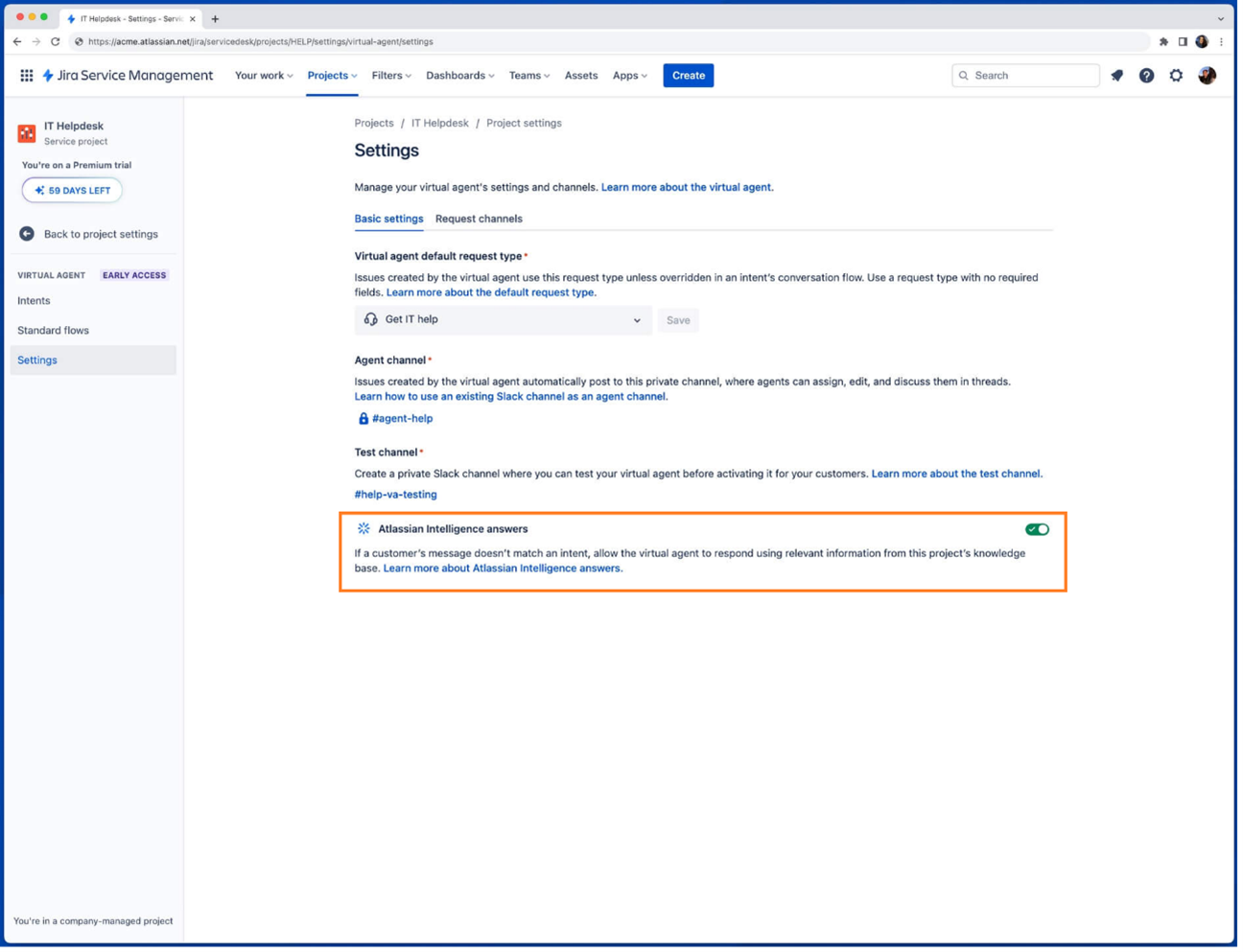
And the option must also be activated in the channels where the virtual agent responds to the customer, in the section: Virtual Agent > Settings > Request channels:
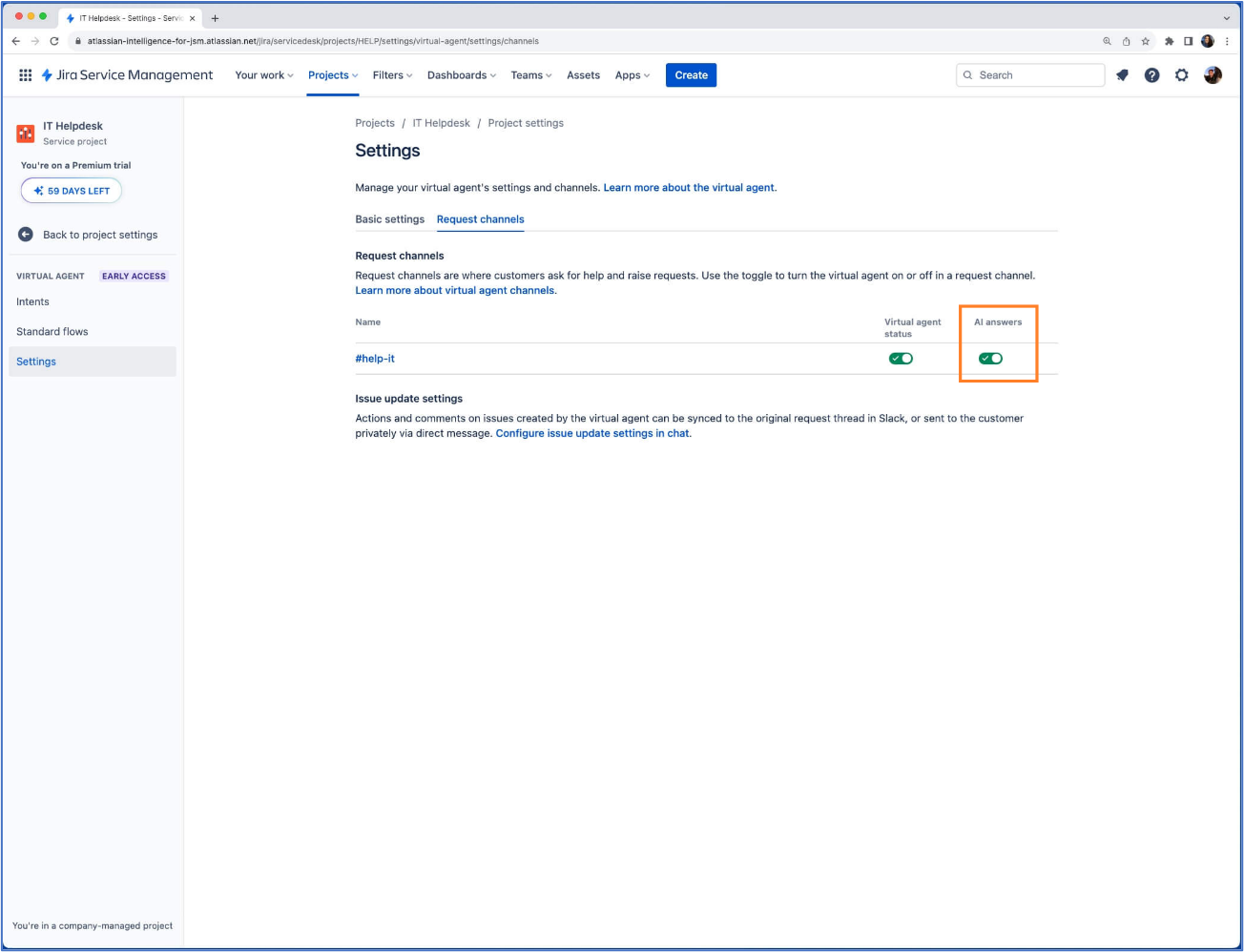
The virtual agent can be configured to work with one type of conversation or with both.
AI Summaries
Atlassian Intelligence allows you to write a summary of the incident based on the description and comments of the incident to simplify its analysis. To do this, the agent only has to click on the option that appears with the AI icon “Summarize”.
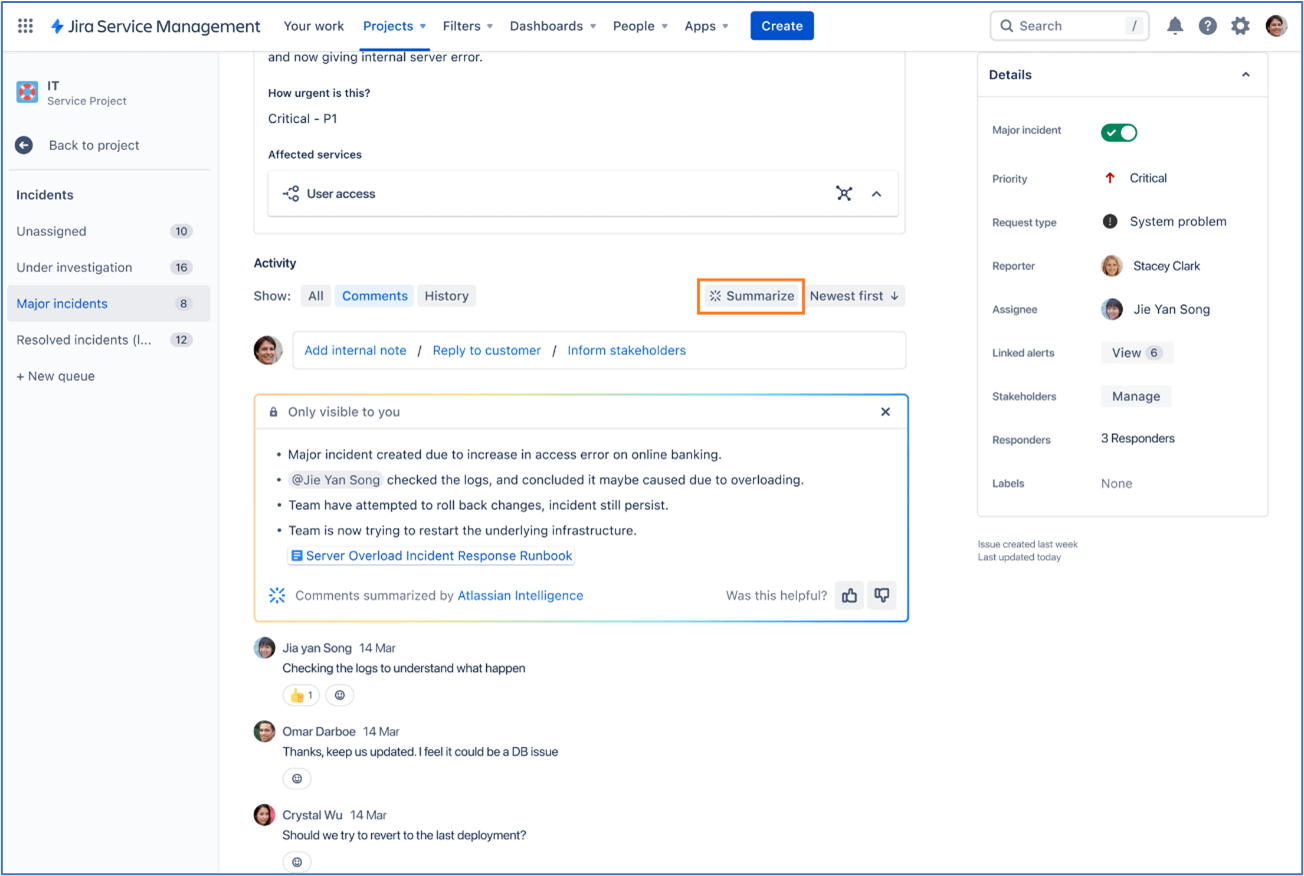
Generative AI in the issue editor
Atlassian Intelligence can also help agents create and improve responses to customers. The Incident Editor’s generative AI can help agents craft better responses by adjusting their tone to be more professional or empathetic ensuring clearer and more concise communication with the customer.
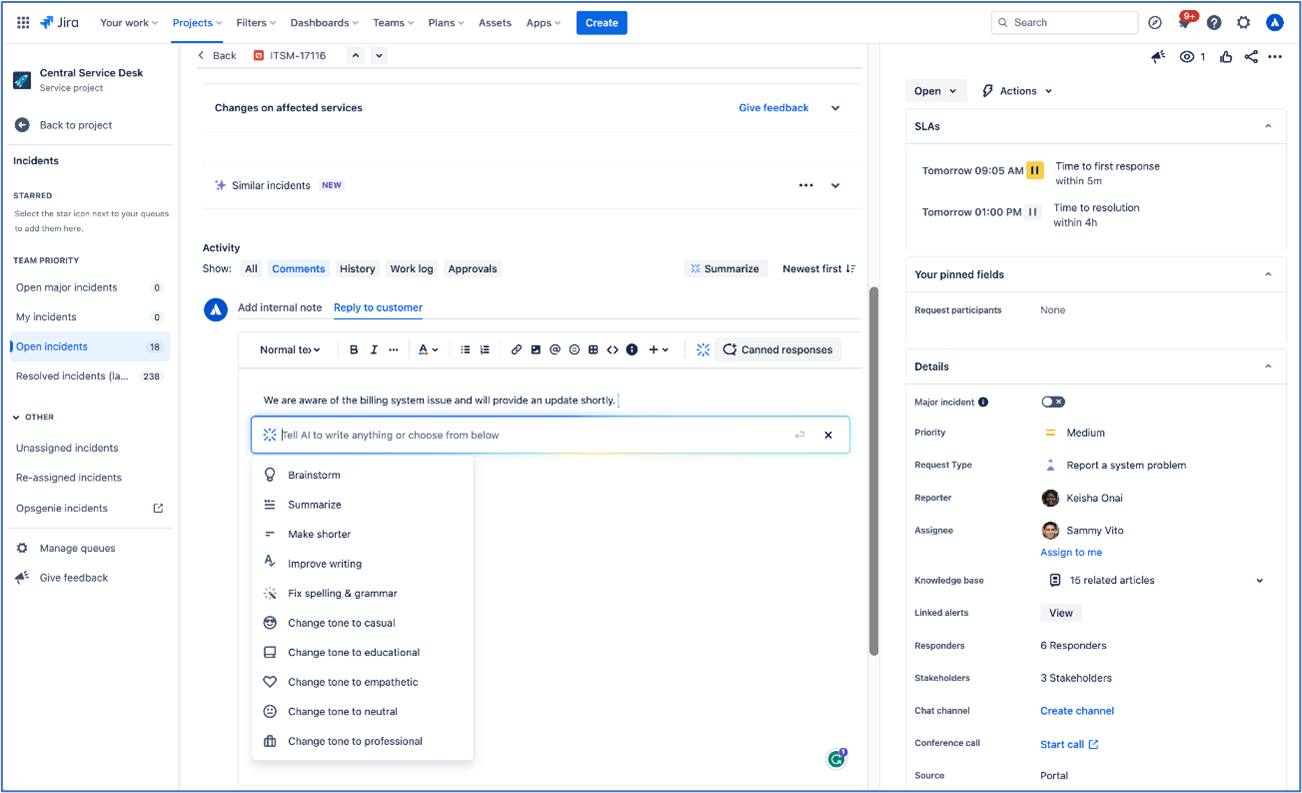
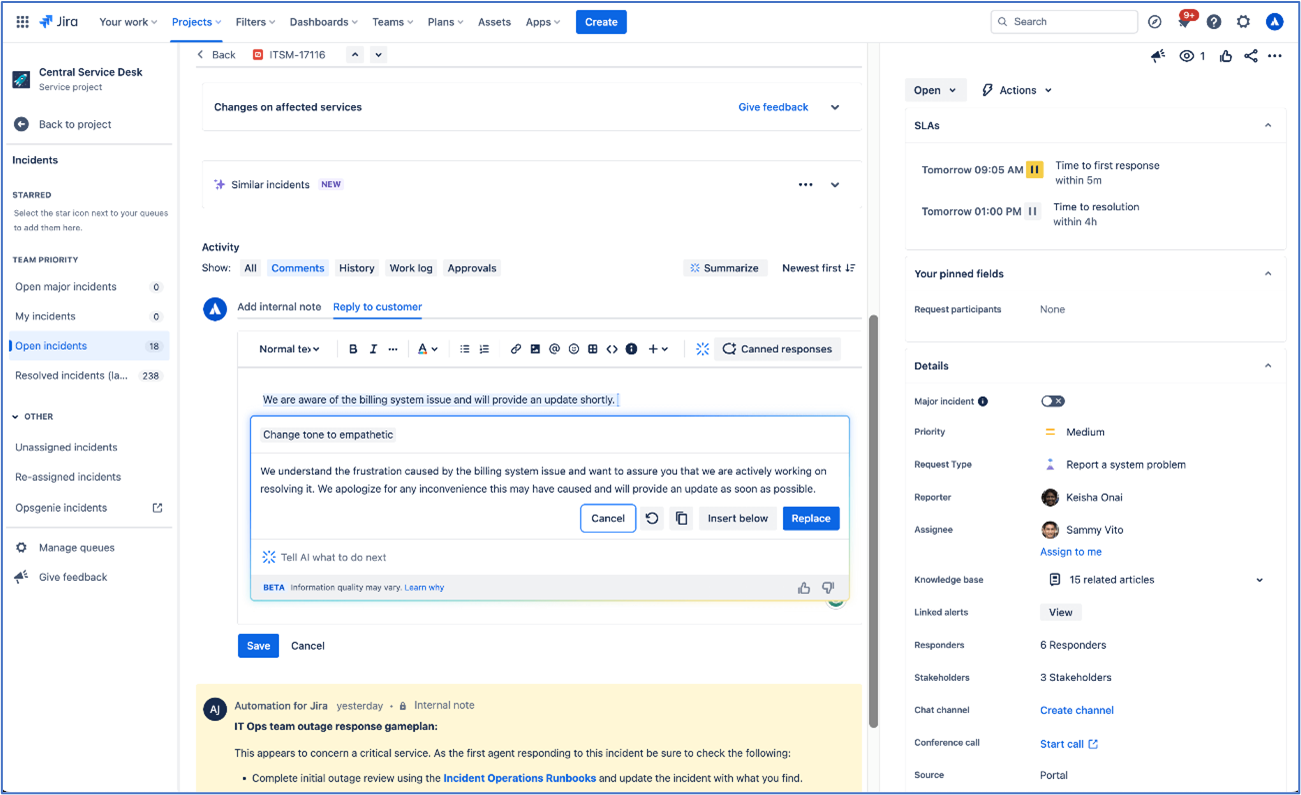
Similar requests and incidents
Atlassian Intelligence provides a panel of similar requests or incidents within the details of each incident, making it easier to:
- Problem detection.
- Duplicity of incidents.
- Reuse of solutions to similar tickets.
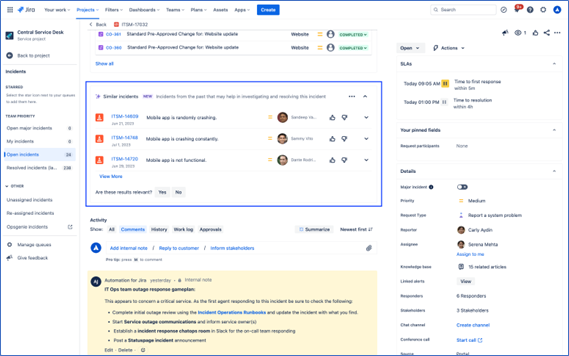
Conclusions
Atlassian Intelligence will certainly speed up the resolution of work and improve the service provided to customers trying in the future to improve their autonomy, increasing the percentage of volume of resolved tickets.
Authors: Juan José García Merino y Jaime Escribano Benavente

